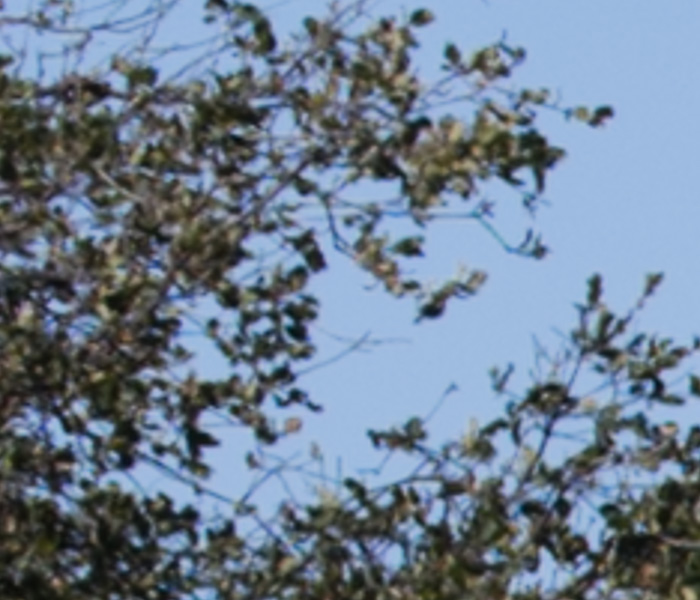This is a continuation of the real-world, informal testing of the Sony/Zeiss 55mm f/1.8 Sonnar FE (Zony 55) and the Zeiss 55mm f/1.4 Otus ZF.2 lenses on the Sony alpha 7R (a7R) and Nikon D810 cameras. The overall scene is in the previous post. In this post, I’ll present edge captures at various apertures from all three combinations that work:
- Otus on a7R
- Otus on D810
- Zony on a7R
It is not possible to use the Zony on the D810 because the flange focal distance of the Nikon F-mount is too long.
I will not show the center crops, because they’re all pretty boring until diffraction sets in. Both of these lenses are capable of doing justice to sensors much larger than 36 megapixels in the center of the image.
All images were captured on RRS TVC-43 legs and an Arca Swiss D4 head, with RRS L-brackets on the cameras, and developed in Lightroom CC 2015 with ACR 9.0, with white balance set to Daylight and sharpening turned off. I used electronic first-curtain shutter (EFCS) on the D810 pictures at 1/2000 second and below; the D810 EFCS doesn’t work above 1/2000 second. The a7R does not offer that feature. I used the 2-second self timer on the a7 and a three second shutter delay on the D810. The D810 was set to ISO 64, and the a7R to ISO 100. I used aperture metering mode. The edge crops are enlarged to 300% using Lightroom’s export algorithm with sharpening turned off..
The Otus at f/1.4 on both cameras, and the Zony wide open at f/1.8:



All the images are dark because of the corner falloff. The two Otus images are virtually identical in sharpness. The Sony image is very slightly softer, but is turning in an amazing performance, given its price.
At f/2:



Here’s a surprise. The a7R Otus image is a hair softer than the D810 one. Shutter shock? Hard to believe with a shutter speed of 1/5000 second. It’s a very small difference. The Zony image is definitely softer, but very credible. Outstanding performance for a lens fighting out of its weight class.
At f/2.8:



There’s a little smearing on the a7R/Otus image compared to the D810/Otus crop. The Zony image is softer yet, but not by a lot.
At f/4:



Same pattern: There’s a little smearing on the a7R/Otus image compared to the D810/Otus crop. The Zony image is softer yet, but not by a lot.
At f/5.6:



Now the two a7R images are much closer together, as the Zony edges closer in performance to the Otus. The D810 image remains sharper, but not by much.
At f/8:



I don’t see a lot of difference among these three images.
At f/11:



Diffraction is setting in noticeably. These look pretty similar. The Zony is maybe a hair softer.
F/16:



The images are getting pretty soft, with the Zony the softest. I have heard that the Otus doesn’t fall apart as fast as most lenses when you stop it down, and there seems to be some justification for that.
All in all, a darned impressive performance from the Zony 55. I think we all expected that kind of performance from the Otus. Both of these lenses cry out for 72 MP sensors. Maybe we’d see more difference with them.
I’ve always wondered why some lenses don’t seem to suffer from diffraction as much. My Contax 28/2.8 seems to be better at the pixel level at f/11 than other lenses that are sharper at faster apertures, for example.